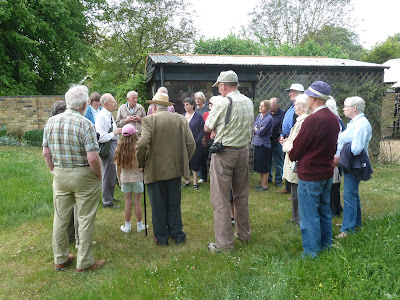We dug it up and took it away in black bags to stop it spreading seed along the river.



Sightings and news for the Naturewatch group of Great and Little Abington in Cambridgeshire, UK. See below for more details and information on how to join.



 Chervil
Chervil Hawkweed
Hawkweed White Helleborine
White Helleborine Common Broomrape on clover
Common Broomrape on clover White tailed bumble bee
White tailed bumble bee Common carder bee on rosemary bush
Common carder bee on rosemary bush Broad bodied chaser (type of dragonfly)
Broad bodied chaser (type of dragonfly) Broad bodied chaser (type of dragonfly)
Broad bodied chaser (type of dragonfly) Green Shield Bug
Green Shield Bug Damsel Flies
Damsel Flies
These are some of the creatures (and plants) we found on the walk...
 Red Shanked Carder Bee (Bombus ruderarius)
Red Shanked Carder Bee (Bombus ruderarius) Cuckoo Bee
Cuckoo Bee Narcissus Bulb Fly (Merodon equestris)
Narcissus Bulb Fly (Merodon equestris) Meadow Saxifrage
Meadow Saxifrage Star of Bethlehem
Star of BethlehemAt their meeting on 9 April 2005 the members approved this revised version of the aims of Abington Naturewatch:
The organisation is informal and communication is by email if possible; members are notified of events from time to time. Contact details are maintained by a small "project team". There is currently no membership fee as costs are covered by voluntary contributions at events.
Members are encouraged to report notable sightings of flora and fauna within the Abingtons to the appropriate sector coordinator and an illustrated record is published annually.
A map of the area covered, with some features noted, is available here: http://maps.google.co.uk/maps/ms?ie=UTF8&hl=en&msa=0&msid=213774935674882866424.00000111dca2be9f06ab8&z=13>
For more information or to join, please contact David Farrant on (01223) 892871.
Contributions to our records should be sent to sector contacts or either of the above. Photographs may also be submitted to Andy Merryweather (amerryweather61@gmail.com)